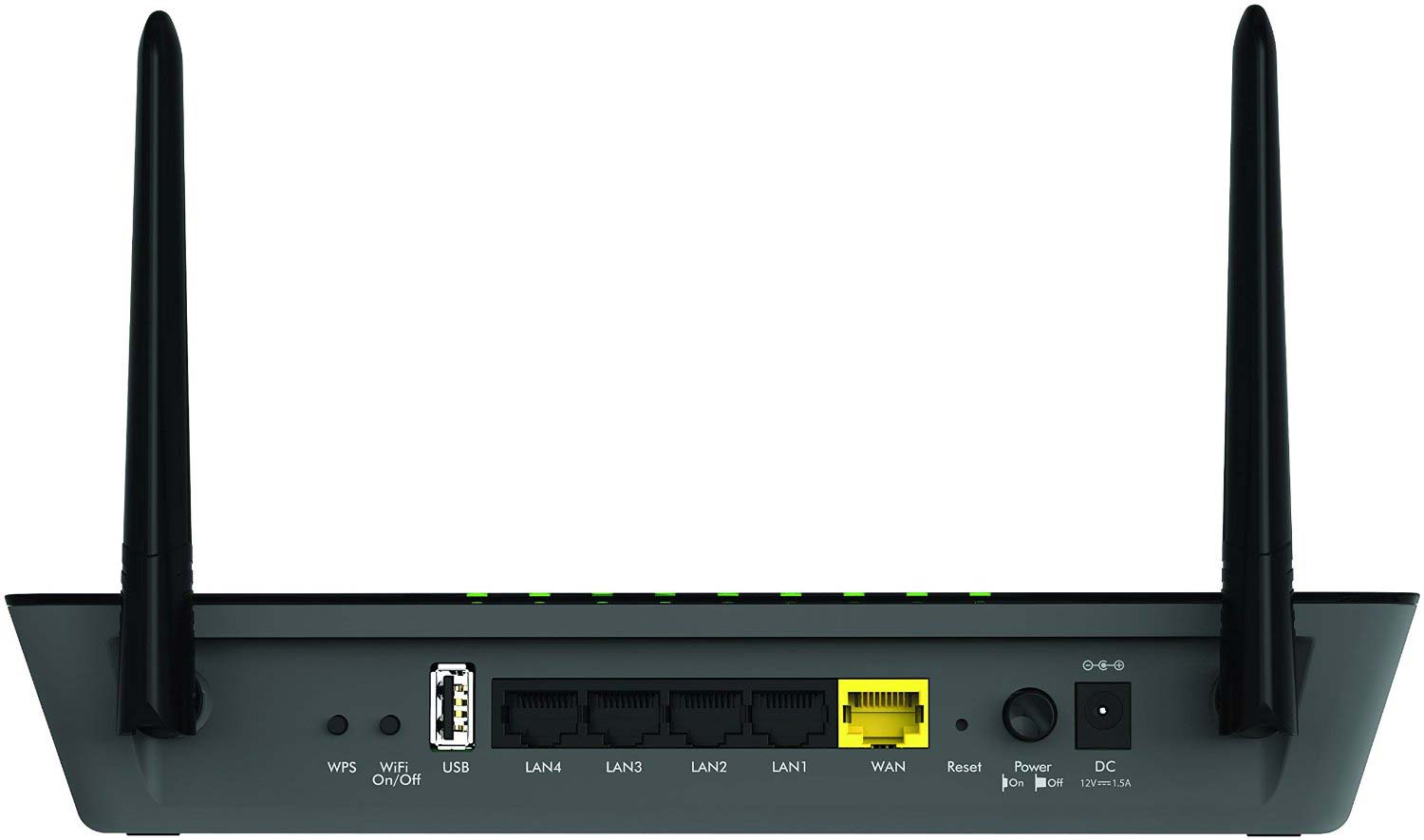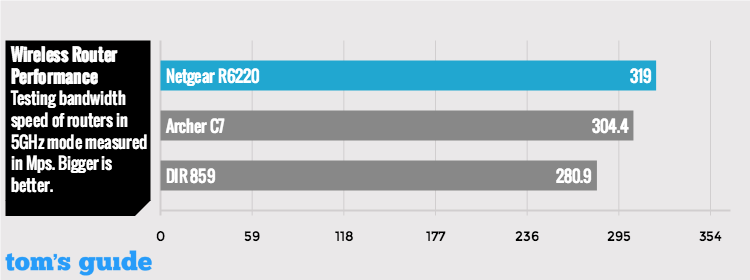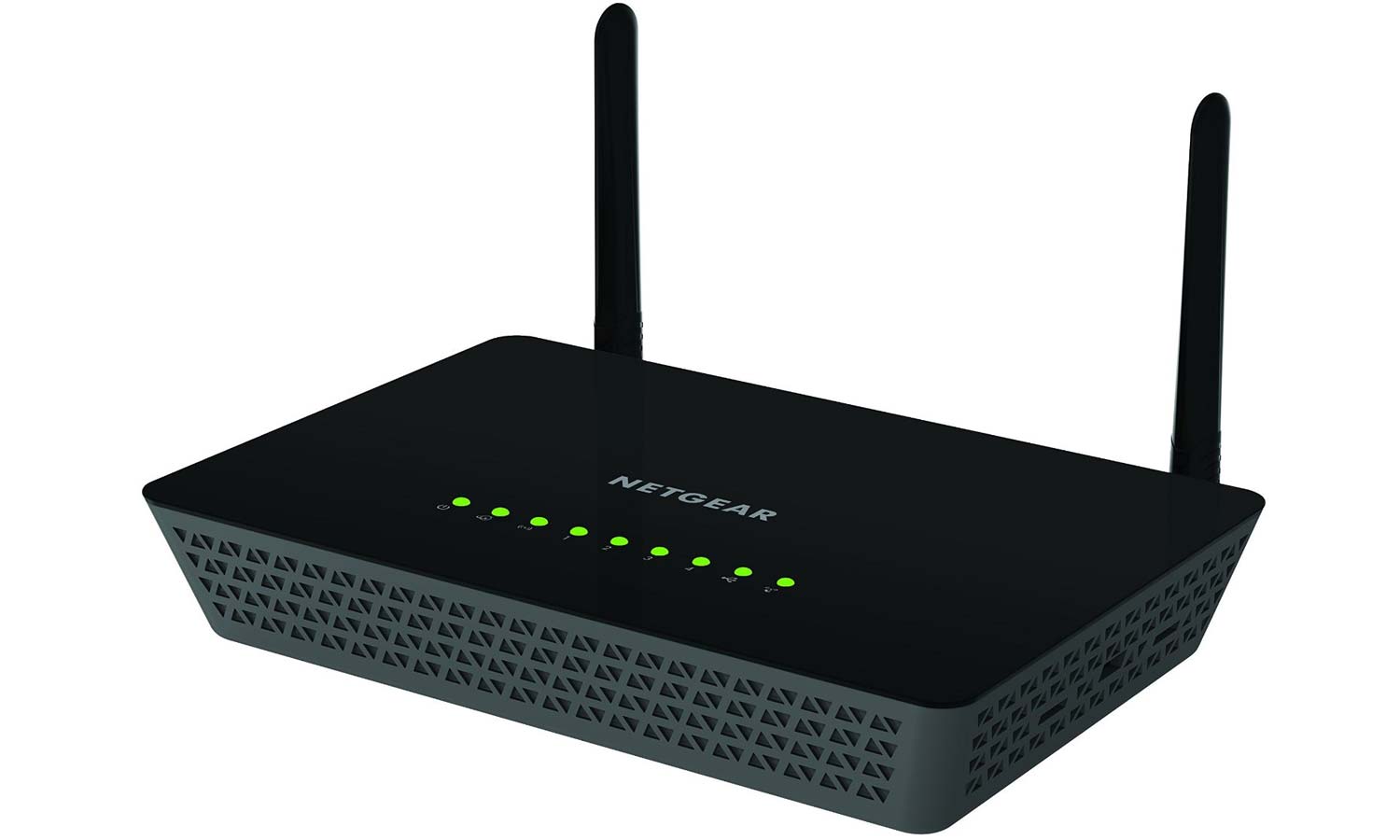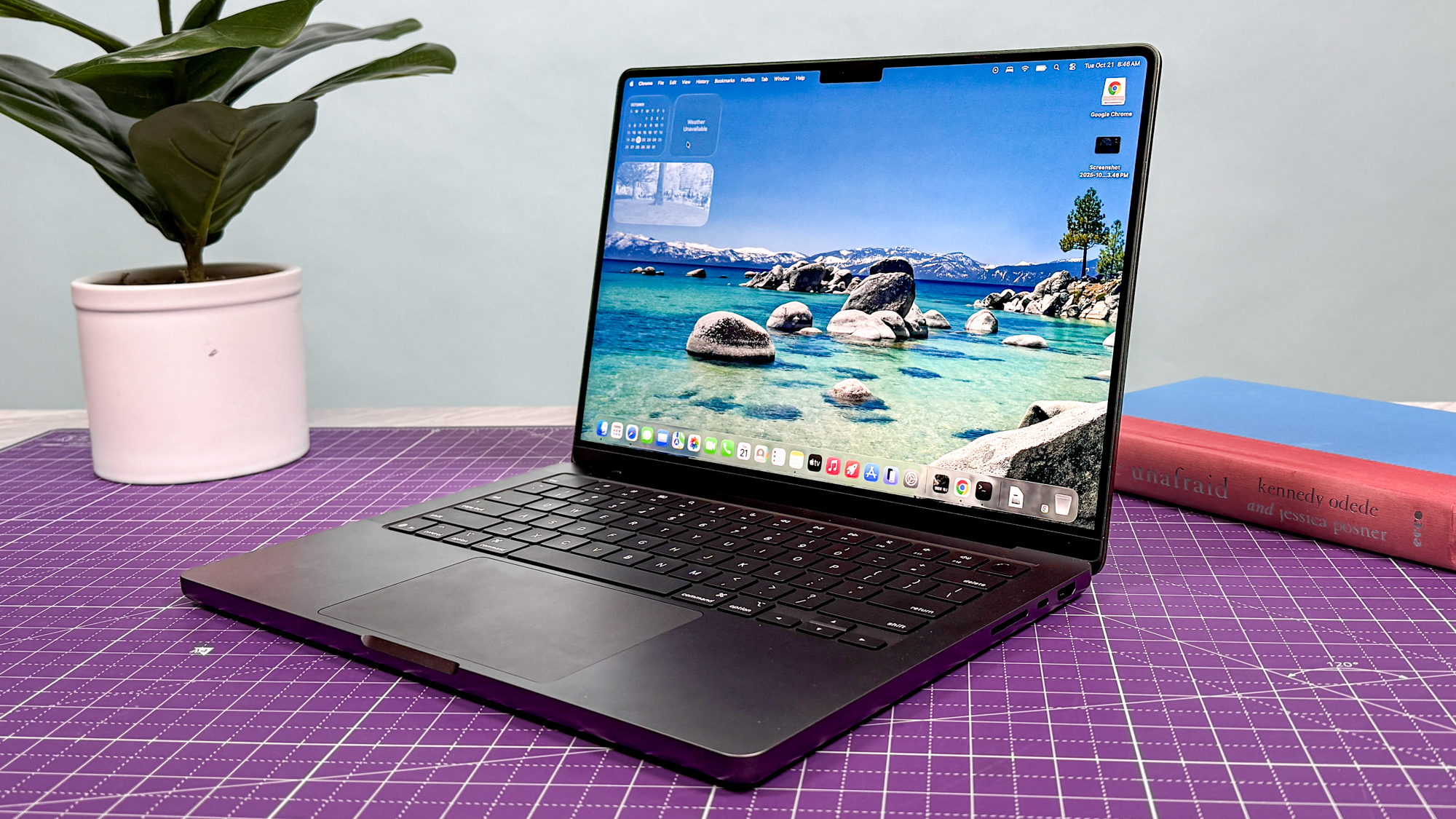Tom's Guide Verdict
Netgear's R6220 combines good 802.11ac performance, useful parental controls and excellent software for an affordable price.
Pros
- +
Good performance
- +
USB port for hard drive or printer
- +
On/off wireless switch
- +
Parental controls for restricting web surfing
- +
Low price tag
Cons
- -
USB ports use slower, 2.0 spec
- -
Can't change antennas
- -
Lacks the latest performance-boosting technology
Why you can trust Tom's Guide
As the affordable 802.11ac router market becomes more crowded, a device like Netgear's R6220 ($93.89) stands out with the right mix of performance and features. In addition to having a USB port for networking your printer or hard drive, the R6220 offers parental controls for filtering objectionable websites. Add in strong data rates and you have one of the best router values for bathing an entire home in high-speed Wi-Fi.
Design
Like many of its competitors, Netgear's R6220 is housed in a plain black plastic case that lacks the fashion-forward design of Google's OnHub. In fact, the R6220's only adornment come in its patterned vents. At 1.6 x 9.4 x 7.2 inches, it's 0.2 inches taller and 20 percent larger than TP-Link's similar-looking Archer C7 router.

The R6220's two antennas extend 5.3 inches and can be rotated and swiveled, but you can't swap them out. The R6220 has high-gain amplifiers for each antenna.
As with the Archer C7, living with the R6220 can involve a light show, with nine green LEDs, which might prove distracting. The lights signal that the router's turned on, has an Internet connection, broadcasts a Wi-Fi signal and has an active Wi-Fi Protected Setup (WPS) system; they also indicate activity on the router's USB and four wired LAN ports.

In addition to the expected power button and LAN ports, the R6220's back panel adds a USB 2.0 port for connecting a printer or hard drive. There's also a recessed reset button and a WPS switch for adding new devices to the network.
As is the case with the Archer C7, the R6220 has a switch for turning off wireless transmissions, which transforms the device into a wired router for when you go on vacation. Unlike OnHub, the R6220 can't automatically retrieve and load new firmware, which is a feature finding its way into more routers. That said, Netgear's Firmware Upgrade Assistant makes finding and installing new software easy. You can't set the R6220 to run only approved software, though, which might stop a hacker from breaking in.
Get instant access to breaking news, the hottest reviews, great deals and helpful tips.
Inside, the R6220 has an 880-MHz MediaTek processor — a little bit slow for routers in this class — and 128MB of RAM, as well as 128MB of flash storage space for holding the system's software and settings.
Specs
Wi-Fi Spec: 802.11ac/Dual Band
Number of Antennas/Removable: 2/no
Ports: 4 Gbps LAN, USB 2.0
Peak 802.11ac performance: 382.4 Mbps (at 5 feet)
Range: 125 feet
Size: 1.6 by 9.4 by 7.2-inches
Performance
The R6220 is a dual-band router, which means it operates over both the 2.4-GHz and 5-GHz frequencies. As expected for a lower-cost router, the Netgear doesn't support the most cutting-edge networking technologies, such as MU-MIMO, which can make things challenging when you have lots of devices on your network at once. But overall, the R6220 performed well.
The R6220 stayed connected with a Surface 3 at up to 125 feet — more than adequate for all but the largest homes.
In a crowded office environment with many overlapping Wi-Fi networks, the R6220 moved a combined peak throughput of 382.4Mbps (measured with Ixia’s ixChariot software) over its 2.4- and 5GHz channels at 5 feet. By contrast, the similarly priced Archer C7 reached 360.6 Mbps, although the R6220 was off the pace set by the TrendNet TEW 812DRU.
When connected to the R6220's 2.4-GHz band, the router delivered its top bandwidth of 53.4Mbps at 5 feet. By comparison, the Archer C7's peak performance was 59.2Mbps at 15 feet. Both were second best compared to D-Link DIR859's 76Mbps at its maximum output when 15 feet from the client.
MORE: Best Router - Get a Better Wi-Fi Signal at Home
In a suburban house, the R6220's 2.4GHz signal stayed online with a Surface 3 at up to 125 feet. That's 5 feet shorter than the Archer C7's range and 50 feet less than the range of the Amped RTA-1750. Still, that reach should be more than adequate for all but the largest homes.

In 5GHz mode, the R6220 hit its peak throughput at 319Mbps, when 5 feet from the test client. That's well ahead of the Archer C7's 304.4Mbps of available bandwidth at 5 feet and the DIR859's 280.9 Mbps at 5 feet.
The R6220 easily passed our stress test by successfully delivering enough data to a Surface Pro 3, an iPad Mini and a Samsung Galaxy Tab S2 for watching TV, playing a movie and listening to an Internet radio station. All this was happening while data moved back and forth in the background between two computers.
Setup and Warranty
Setting up the R6220 is a matter of connecting it to a broadband modem and configuring it through your PC. The router comes with a generic network name and password that you'll want to change. From there, the Internet Setup Wizard takes over, auto-detecting your Internet connection and setting up the device in 5 minutes. All told, it's an easy routine to go through.

Once you complete the setup, you can print your final settings and choose to download two Netgear programs. The ReadyShare Vault app lets you use the router as a file transfer protocol server for remote access to a hard drive plugged into the USB port. There's also the very useful Genie app for monitoring the LAN and making configuration changes.
Netgear includes a one-year warranty, which is typical of many routers, though it comes up short compared to TrendNet's three years of coverage.
Customization
That Genie app can optimize the R6220 if you don't like having your router set up to generic preferences. There are Genie versions for iOS, Android, Mac and Windows, though you can't run the software full-screen on Windows or Mac systems.
If you've got little ones at home, the RT6220 has excellent parental controls that can filter out objectionable websites.
In addition to a cool map of networked clients, Genie's main icons show the R6220's Internet connection status and Wi-Fi–connected clients. There are settings for the router, its parental controls and ReadyShare online data sharing.
Genie provides another way in with an old-school list of the device's major categories on the left, including Internet, Wi-Fi Connection, Router Settings, Network Map, Parental Controls, ReadyShare, AirPrint, My Media and Network Support. Click on any to get to configuration pages, although what you can change is limited.
MORE: Linksys EA8500 MU-MIMO Router Review
For instance, a level below the Router Settings, you can change the network's name, encryption type and pass code. Unfortunately, the R6220 works only with WPA2 encryption, not the older WEP or WPA techniques, which may be a problem if you're using an older print server or online webcam.
Parental Controls and Security
If you've got little ones at home, the RT6220 has excellent parental controls that can filter out objectionable websites. The software has settings for High, Moderate, Low and Minimal blocking and can also exclude sites based on words they contain. You can't, however, base the filtering on the child's age, which other parental control software offers. Plus, rather than using Genie, you need to use an online OpenDNS account for the router's parental controls. It's free and takes just a couple of minutes to set one up, but I prefer to do everything in one place.
For security, the R6220 has both network address translation and state packet inspection firewalls and can protect against a denial of service attack. In addition to the ability to scan the area for interfering Wi-Fi networks, the router has a Traffic Meter that can help keep track of data usage for those homes where the connection is metered.
Bottom Line
Today's budget routers do a lot for $100, and Netgear's R6220 impresses with good throughput. For those who want to make the router the center of their digital world, the R6220 can connect a USB printer or hard drive, and its Genie app lets you not only see what's going on with your network but also make changes. This is the router to get for families that have a hunger for lots of wireless data.
Brian Nadel is a freelance writer and editor who specializes in technology reporting and reviewing. He works out of the suburban New York City area and has covered topics from nuclear power plants and Wi-Fi routers to cars and tablets. The former editor-in-chief of Mobile Computing and Communications, Nadel is the recipient of the TransPacific Writing Award.

